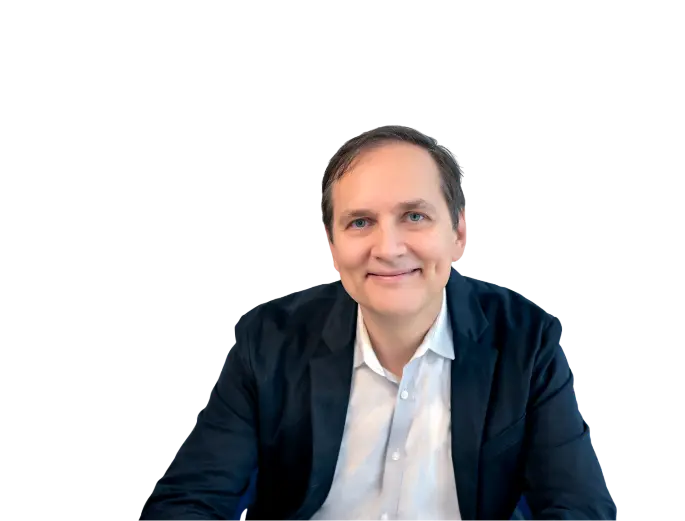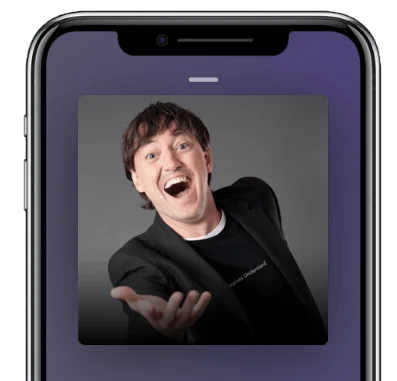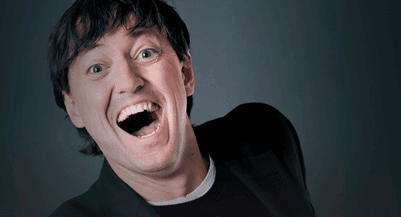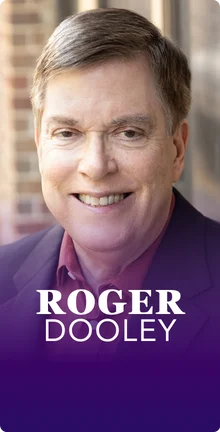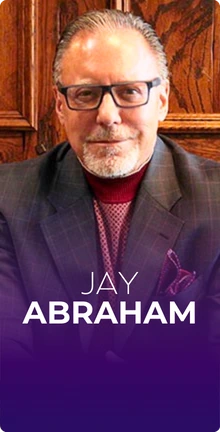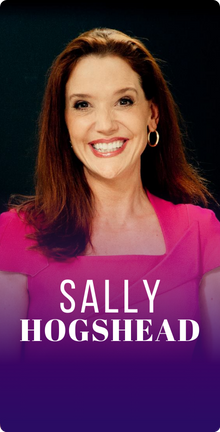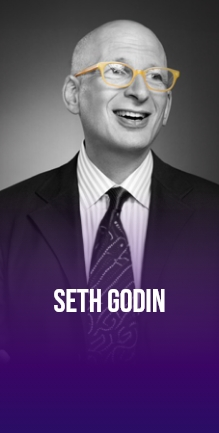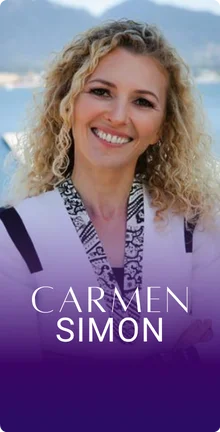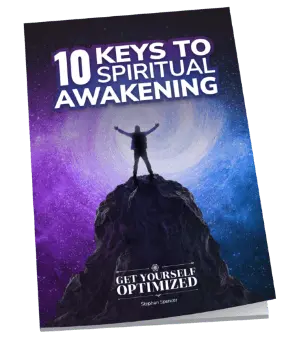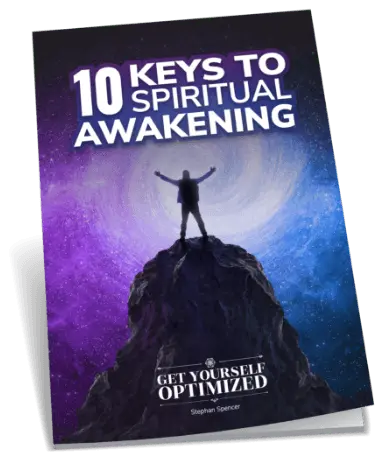In this Episode
- [05:00]Stephan shares a story about a time that the universe conspired to allow his life to change for the better.
- [08:24]Joey talks about what some of his favorite speaking events are. He then discusses how he knows whether he has succeeded in getting his audiences to act differently.
- [12:57]Joey feels fortunate in that people have been very giving with testimonials and case studies praising his work.
- [14:33]Does Joey use some sort of action to get people to commit to change in a meaningful, powerful way?
- [18:13]Stephan digs deeper into Joey’s mention of sending a handwritten thank-you card or gift box. Joey then elaborates on the importance of thank-you notes and how meaningful they are.
- [22:42]Like a thank-you card or letter, another thing that people don’t throw out is a book, Stephan points out.
- [25:53]Joey makes a recommendation for listeners who want to learn about strategic gift-giving.
- [27:29]Does Joey have any sort of video challenges in place? Not yet, he answers, but is in the process of setting up something along those lines.
- [31:29]Joey discusses how he plans to form a community rallied around the video program he’s just been discussing.
- [34:32]How many speeches does Joey typically do in a year? He answers, then he and Stephan talk more about speaking organizations and some excellent speakers.
- [40:45]Joey digs more deeply into the types of speaking he prefers to do. He then points out the ratio of books written about what happens before someone becomes a customer compared to after someone becomes a customer.
- [43:00]Stephan and Joey talk about Tamsen Webster and Michael Port.
- [46:36]Joey begins to explain his eight-phase customer service methodology, digging into the first few steps.
- [49:01]How could a consultant or coach assuage buyers’ remorse or the tendency to second-guess oneself?
- [51:53]We reach the fourth phase: activate. Joey explains what this means, and explores this and the following phase of his program.
- [55:55]Phase six is accomplish, which is when the customer accomplishes the goal they had when they decided to start working with you.
- [57:21]If you accomplish that goal, you move to stage seven, where the customer adopts you.
- [57:47]Only after adoption can we move into stage eight: advocate. This is when the customer raves about you to their friends and family.
- [60:37]Joey explains what his goal was in creating this eight-phase methodology.
- [62:10]Joey offers his email address: jo**@*********an.com.
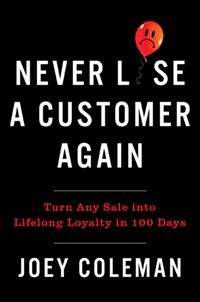
Joey, welcome to the show. It’s great to have you on the show.
It’s great to be on the show. Thanks so much.
We met through Tony Robbins. We’re both Platinum partners. I think we’re both life-long learners. We love going to seminars and conferences and masterminds and all that sort of good stuff. Correct me if I’m wrong of course.
You are absolutely correct. I think the actual city we would’ve met in might have been – we might have met while skiing or it might have been in Egypt.
Yep. My very first Platinum trip was Egypt and Israel.
That’s where we met then.
Yep.
I knew it’s one of those two, yeah. Yeah, it’s taking us back a little bit. But yeah, that’s right.
Yeah. How long were you a Platinum partner for?
I was officially a Platinum partner for about a year and a half but did Tony Robbins’ type activities for probably about four or five years. During that time, my wife and I both were Platinum partners. We actually both signed up. When we committed to that, we promised that we would do every event. For those 18 months, we spent a week or more with Tony every month for 18 consecutive months. It was pretty intense and absolutely incredible.
Yeah, I agree. I did the same thing. I got so much value out of it. But boy, it’s hard to run a business and be away from that business for that much time.
So true, so true. It became one of those things where there was such incredible content that I’d get home, it’d take a few days to recover. I’d try for two weeks to implement what I had learned before leaving for the next trip. It just got to be a whole lot. But the tremendous program, great experience, and got a chance to meet fantastic people like you.
Yeah, for sure. You invested quite a lot of money, so did I, to be part of this Platinum Partnership. It just goes to show that when you invest that kind of money, which is like six figures a year, to be part of that, you get out of it what you put into it, right?
Absolutely, absolutely. I’m a big believer. The very first Tony Robbins program I did while I was at Unleash the Power Within, I signed up for his Mastery University program. At the time I signed up for the program, I kid you not, I had less than $1,000 in my bank account. The program was $15,000 but they said I had 30 days to pay. I was like, “Oh. Surely I can figure out some way to get make this money in the next 30 days. It’ll be great.” Kid you not, signed up, went back to the hotel room that night. I signed up on day 3 of a 4-day event. Went back to the hotel room that night and I had an email from somebody I had met with almost a year before and given a proposal to. The email basically said, “Joey, I know we haven’t been in touch in ages but you gave us this proposal. We’re finally in a place where we can pull the trigger and move forward on it. Are you still open to doing that?” I kid you not, the price tag on that engagement was the exact same amount that I had paid to join Mastery University. That idea of leaping in the net will appear jumped right in within hours of my signing up. I emailed the client back. I was like, “Yes. I’d love to work with you. Go ahead and wire that money over,” so that I can basically hand it over to Tony Robbins’ people. It worked perfectly.
Yeah. The universe does conspire to make life happen for you.
Yes, it does.
I had a similar experience. We do have a lot in common here. I was at UPW, Unleash the Power Within in 2009. That was my very first Tony event. A huge life-changing epiphany came out of that event including from doing the firewalk and the first night where I had this shift in consciousness. I decided I could really break through all my fear barriers and everything. That’s how I ended up completely remaking myself, doing a full life reboot was because of that first Tony Robbins event and specifically doing that firewalk. But during that weekend, Tony invited us to be part of his Mastery University. As you say, it’s a chunk of money, it’s like $15,000. Actually what I signed up for first was Business Mastery.
Oh, okay.
That was $10,000, which was a lot of money for me. At that time, I was going through a divorce, I was on a set salary, I had minority ownership at my own company and my own agency at that time because of the divorce and I did not have the ability to use either company funds to pay for that Business Mastery seminar nor could I increase my salary.
Oh, wow.
I would’ve had to get board approval and nobody would’ve approved it because we were going through an acquisition or getting acquired. We had to keep cost low and blah, blah, blah. Tony says, “You ask a better question, you get a better answer.” I learned that on the weekend. I had decided to ask myself a better question: how do I get this event for free?
Nice.
By the end of the weekend, I had my answer and I got in for free.
Wow, that’s impressive.
Yeah. I didn’t get it free from Tony. But what I did was I remembered that one of my friends and industry colleagues kept on asking me to come and train his team on SEO. I’m like, yeah, nah.
Yeah. I don’t want to do that.
Not really. Because if I just got paid for that, it wouldn’t actually go to me, it would go to the company. I wouldn’t see any of that money because of the situation I just described, right?
Sure. Yep.
Going through divorce and cutting cost and so forth. That would not help me personally at all. I had zero interest in doing that. I remembered him over the course of that weekend and asked that better question of myself like how do I get in for free. I’m like, what if I call him and ask him to buy me a ticket to Business Mastery and of course pay for the expenses to fly me out to do the training for a day? I called him up and he said yes.
I love it.
I got him to pay for my ticket. I did one day of training and got this amazing Business Mastery event. Eventually, I ended up speaking at Business Mastery the following year, then again in 2013. I never would’ve envisioned that happening. At the time I was just trying to get in to attend and pay the seminar price tag.
Sure. From the audience to the stage in just one year, ladies and gentlemen. I love it.
Yeah, pretty funny. You do a lot of speaking. What are some of your favorite events where you speak?
There is nowhere that I am happier than when I am on stage. I speak to audiences all over the world that range from small mastermind groups of 10 to 20 people to the largest audience I’ve spoken to this year was about 4500 people at Social Media Marketing World in San Diego. It really runs the full gamut of small, medium, and large size audiences. It sounds like I’m dodging the question but I promise I’m not. There really isn’t one audience that I love more than any others. I speak across, as I mentioned, a variety of sizes. I speak across a wide variety of industries, a tremendous variety of locations. What gets me most excited is getting the chance to be in front of an audience that actually wants to take action and change their behavior. I believe there are three types of speakers. There are speakers who make you think differently, speakers who make you feel differently, and speakers who make you act differently. While I certainly hope that my audiences think and feel differently after spending some time with me, if they don’t act differently, I feel like I failed my job as the speaker. My goal is, anytime I can walk into a room, which usually that means it’s going to be an audience of entrepreneurs or small business owners or folks who believe that they’re more in-charge of their destiny than maybe a traditional employee might. If they are excited about taking the steps to create some change in their life, we’re going to get along beautifully.
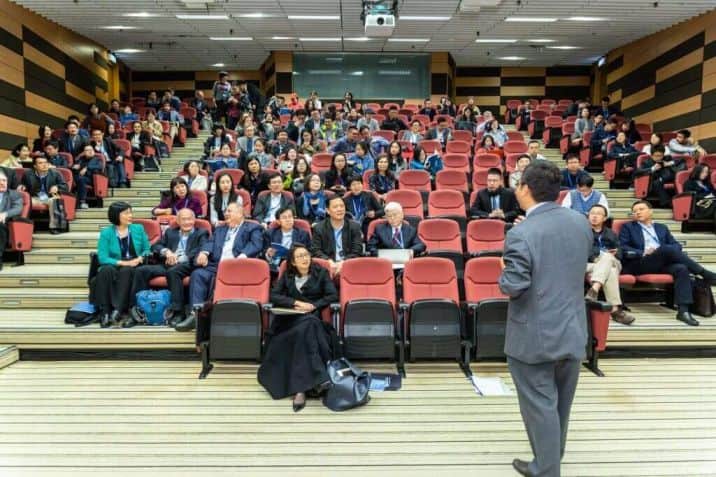
Yeah, makes a lot of sense. You are a change agent for these audiences. How do you know that you have succeeded in getting them to act differently? Because a lot of times the stuff doesn’t stick. You go to a Tony Robbins event. It’s like I’m so excited, I feel so motivated to change my life. Then you’re back at home, back at the office, and get back into your old patterns.
Sure. I speak specifically on how to improve customer experiences. From a lens of what can you do to make the customer experience so fantastic that you have a customer for life? It’s really based on this principle I developed in this methodology called the First 100 Days. It basically says that on day 1 when a customer buys your product or service, a clock starts ticking. You have 100 days to create such an incredible foundation for the relationship that they are never going to want to leave you after that. It’s really about helping them as they navigate through these eight phases that I’ve identified of the customer journey, if you will, and what can you do to make sure that they are well met in each of those phases. If you do that, what happens is the customer has such an incredible relationship with you that not only do they stay but they bring all of their friends, family, colleagues to do business with you as well. I think the way that I know this is working is I’m very excited to, basically on a daily basis, receive emails from people who have been in the audience and say things like, “Joey, we never got the chance to meet but I heard you speak at this event. I went back to my company and implemented your ideas and your strategy. It led to a 25% increase in our profits this quarter. It led to us having done this eight months ago and we haven’t lost a single customer since, when before we were losing three or four a week.” I get this anecdotal data back from people to let me know that these methods are working. What I really wanted to do when I originally developed this concept is create something that in a 15-minute discussion, you could get enough ideas about what the strategy is and how to implement it that you could go implement it on your own. I work with clients and I’m happy to do that in one-on-one or consultative capacities. But I’m even more excited about the person who says, “You don’t remember me but I saw a 15-minute speech four years ago. As a result, my business has grown exponentially. I believe it’s because of the things we did after I heard you speak.” That’s just music to my ears.
Yes. Also, something that you could take a quick video of like, “Can I just get my phone? Can you just repeat that again?”
Exactly. I feel very fortunate. Folks are very giving both with the testimonials and the case studies. In fact, I’m actually working on a book. We’re very close to finalizing it. It comes out next March. In the book, there are 46 case studies, many of which come directly from people who I either worked with one-on-one or fall in that category of somebody who saw a 15-minute speech and it added six figures to their business on an annual basis since then. Real-life change because people were willing to take action.
Real-life change because people were willing to take action.
Wow, I love it.
Yeah.
We’re going to have to cover a little bit of that. I know at some point, we’re going to need to do some transformative stuff in this interview here. Let’s circle back to that a little bit.
Sure.
I want to ask you a couple of other questions about the speaking stuff because I’m jazzed by speaking as well. I love to inspire and to move people to transform. Not just inform but transform. I’m wondering if you did try to get them to make some sort of commitment to make a change. Like for example, get them to stand up. If they are not wanting to do the thing or whatever then they sit down. Or something where they’re either raising their hands, kind of a yes ladder sort of thing or they’re standing up and they’re turning to a neighbor and ensuring what their commitment is or what the one thing is, etc. Do you do anything like that to get these people to really commit in a meaningful, powerful way?
I’d like to think that I do. I’m a big believer that even though a lot of the research around the three modalities of learning visual, auditory, and kinesthetic has kind of been debunked that you’re not any one of those, that you’re all three. I agree with that. You are all three. I try to incorporate all three into my presentations. Where I think we get that transformational activity is my presentations are very visual. In a typical hour-long keynote presentation, there are over 300 slides. It’s like a movie going on behind me. I try to bring a lot of enthusiasm and performance to the stage. We really check the box on the auditory learning as well. But the kinesthetic learning is something that I think is actually what leads to the change. There’s a part in the presentation where I ask them to basically do a quick two- to three-minute assessment of what they’re currently doing in the first 100 days to create remarkable customer experiences. Invariably, I give them two to three minutes and people are done writing in about 20 seconds. Because most companies are really good at marketing and selling their product and they’re pretty horrible at making sure their customers use it. It’s like after the sale is done they’re like, “Well, we’re all good here. We’re going to go on and chase the next sale,” without stopping to recognize that the customer who made the purchase may not be using it or may have questions or may have challenges. The first 100 days, because it starts on day 1 with the exchange of money or the purchase, in many businesses what happens after that is minimal at best. They frontload all of the activity when the individual is still a prospect, trying to convince them to become a customer but there isn’t much effort put towards customer hand-holding and to our customer retention activities.
We have to do this quick assessment, they write it down. That anchors in the pinpoint of oh, this is something I should be working on. By the end of the presentation, the goal is to flood them with so many ideas that I have them flip the card over and it’s the exact same set of questions but phrased as what can you start doing tomorrow to make the situation better? I give them two or three minutes again. By the time we get to the end of the three minutes, people are like, “Wait, wait. I’ve still got some more. Hang on a second.” It’s kind of like the kid in school that the teacher’s like, “Time” and they’re still furiously writing answers on the test. That kind of point helps anchor them into by the end of my one-hour keynote, you have the plan of things you need to go do. This isn’t rocket surgery, as I would say. This is figuring out, alright what do I need to do? How do I go implement those steps? Then the next thing I will often do in that setting is, as you mentioned, turn to the person sitting next to them and tell them the one thing you’re going to do next week to start to implement. It could be something like sending a handwritten thank you note or shooting a video while you’re at the conference and sending it to your favorite client, just telling them how much you enjoy working with them or telling them the one thing you learned at this conference that is going to make you do a better job of serving them. The response I get from these are just absolutely incredible. I’m all about the can we do a micro commitment or a micro action before you go get on a plane and fly back to your hometown? Because lots of time, I’m speaking at events that are not where the people live, what can you do to take one action so that when you land back at home and go back to your office and the hundreds of emails that have come in while you were at the conference last week and all the meetings that have stacked up that you need to do, that you could carve out a little bit of time to continue moving things forward.
I’m all about the can we do a micro commitment or a micro action before you go get on a plane and fly back to your hometown?
Yeah, that’s awesome. It’s so ironic that you said that sending a thank you card to a client or customer, one of those micro-commitments that you get somebody to make. That very thing was what I asked my community to do, people who were part of my five-day challenge. This was day 5. It was either a thank you card or even a gift basket, something that will really stand out as meaningful. Not just a thank you email but a handwritten card or a gift box or something that really lets them know that they’re appreciated and cared for. That’s a powerful way to move the relationship forward. But also it’s a great way to get links and get mentions on social media and everything. That’s not the reason why you do it, it’s just a nice side benefit. Part of this 5-day challenge was to talk about link building as giving back and how you just are a good member of the online community. You’re going to get rewards from that, kind of like business karma. It’s ironic that you said that very thing that was one of my 5-day challenge things.
Yeah. I think for what it’s worth to anybody that’s listening, it’s a very simple question to ask yourself: when is the last time you sent a handwritten thank you to someone who you appreciated, either the role they played in your life or something they had done for you? If the answer to that question is I can’t remember, or it’s been longer than two weeks, or frankly if it’s been longer than a week, you know exactly what you need to do when you’re done listening to this podcast. Go write a thank you note. I love these people who talk about, “You know what Joey, what’s the return on investment on a thank you note?” Let’s talk about first of all how it makes you feel to know that you’ve lived from a place of gratitude. All the research that’s ever been done says that gratitude does more to optimize health, does more to optimize wellness, mental well-being, etc., than almost anything else we can do. Living from a place of gratitude, number one. Number two, ask yourself the question: when was the last time you received a handwritten thank-you note? The fact and the matter is when I ask that, you probably thought of one. It probably wasn’t this week. It was probably a while ago. Yet, your recall back to that thank you note is very fast. It probably brings a smile to your face or at least left you thinking, “Wow. I actually did something for that person.” It doesn’t have to be handwritten. But we live in an increasingly digital world where the desire for non-digital interactions or more analog interactions is skyrocketing. If you think about trying to stand out in someone’s email inbox, you’re up against anywhere from 50 to 500 messages a day, depending on the person and their email inbox and all the things that are coming in. It used to be that way in the physical mailbox, that there would be a lot of junk mail in there. But I don’t know about you, I go to the mailbox these days and there are maybe one or two pieces. If it’s handwritten, it’s the first thing I open. I give that more attention than anything that’s in my email inbox or frankly in my voicemail or a text message. Because I’m like, “Wow. Somebody took the time to write me a note. I’m going to take the time to read this.” It’s incredible when you get those types of messages. My big theory on all of this stuff is just treat your customers the way you wish businesses you deal with would treat you. You don’t want to be thought of as a number. You want to feel special, you want to feel unique and you love these subtle moments of surprise and delight where something happens that wasn’t planned. Rarely do we find ourselves in a situation where we say, “I bet this week is the week I get a thank you note from that person.” That’s not the way the brain works or our lives work. Yet when that happens we say, “Oh, look at this thank you note. Oh, put it on your desk.” Most people don’t throw a thank you note out right away. They hold onto it a little. I think they’re just so many low-hanging fruit opportunities that the thank you note is but one of them.
Yeah, that’s definitely something that I’ll keep for at least a period of time. Yeah, it does really make a difference. It stands out. Another thing that people don’t tend to throw out, at least not right away, is a book. If you give a book to somebody, either they’re going to keep it or they’re going to gift it to somebody else or donate it. They’re not going to toss it in the trash because there’s a lot of intrinsic value in a book that you don’t get with a brochure, you don’t get with a workbook from a conference. All that other stuff can go in a recycle bin but typically not a book. I don’t know if you’ve experienced that as well. I have three books. How many books do you have?
The book that’s coming out in March will actually be my first book.
Oh, it’s your first book.
Yeah, it’s my first book. But actually it’s interesting you should say that because of my workaround for books. I have a lot of friends who are authors. Lots of times when they’re launching a book, they’ll reach out and say, “Hey. Would you be willing to do a bit of a bulk buy and get some?” I’m always willing to do that. What happens is I actually give those books away. Sometimes, this is not a criticism of your approach because I think it totally works, but another opportunity is to give a book that someone else wrote. Because then there’s absolutely no thought of it being a self-serving gift. Not that your books would be self-serving because they’re very valuable and they’re very tactically oriented it and they help people to actually make the changes that you’re proposing.
And they’re very dense.
They’re very dense, right? That’s our criticism. But there’s a lot of value there.
Better than ambient.
I’m giving you this because I believe that the information that it contains can help you in your life right now.
Yeah, exactly. But if you have the opportunity to give someone a book that maybe they wouldn’t buy for themselves or a book with a short message that says, “Hey. When I was reading chapter 4, all I could think about was my relationship with you,” or, “All I could think about was the way you’ve led your life or run your business,” or whatever it may be. You bet that person’s going to go read chapter 4. It’s going to happen. It’s an NLP open loop. If you want to go down that route, it’s a thoughtful reference to something that feels hyper-personalized. People don’t get gifts like that very often. It’s usually like, “Oh, here’s the Starbucks gift card. I love you. We care about you. Thanks for being a customer.” Instead of, “Hey, here’s something that’s really going to help you grow your business. This particular page or these pages that I flagged in the book is where you want to start.” Because sometimes a book can feel a little daunting. To both give and receive is a gift. Cameron Herold who’s a friend and business writer, I’ve never seen him gift his book to anyone without saying, “Read chapter 12. Read chapter 15,” whatever. He calls out a specific chapter and tells them why they need to read it. It’s a brilliant way to say, “I’m not just giving you this because I wanted to give you something. I’m giving you this because I believe that the information that it contains can help you in your life right now.”
Yep, so good. That’s a very value-added sort of approach to relationship building instead of just saying thank you with a Starbucks gift card which is really brainless and doesn’t show any real thought.
Yeah. Anybody who’s listening that wants a great recommendation for how to dive into this, go check out my buddy John Ruhlin and his book Giftology: The Art and Science of Strategic Appreciation. It’s a fantastic book. It’s a short read. You can read this on the first leg of your flight. If you have a layover somewhere, you’re going to get it done on the first plane ride. It just offers example after example of how to think about gifting in a way that really leads to deep, personalized connection and full of fantastic stories. I highly recommend if you want to dive deeper in this, how to give gifts that not only matter but are going to be well received and are going to pave the pathway for future interactions with the recipient. Giftology is a fantastic resource.
Awesome. Yep, great tip. Let’s jump back to this idea of challenges. Because I just alluded to the 5-day challenge that I do for my community on SEO. I’m curious if you have any kind of 5-day, 7-day, whatever, even 100-day challenge because you have the first 100 days methodology. Do you have any kind of challenges that you put people through where each day has a different video, a different challenge that they go through, and then they post the evidence that they did the challenge to maybe a private Facebook group and you give them advertised bonuses for doing the things? Anything like that?
It’s inching. We don’t currently have anything like that in place. But I promise you I’m not making this up. Right before this call I was meeting with my marketing team. We are putting together a 10-day video mini-course that basically is going to be a series over the course of two weeks. Monday through Friday you get a video that walks you through this first 100 days process with the idea that we’re trying to get you to take some changes to improve the customer experience you’re delivering. Then there’ll be, as you might imagine, some built-in surprises and bonuses in there. We don’t currently have anything like that but coming soon to a theater near you.
That’s awesome. Very cool. Is there something that you’re going to offer as like a front end thing for free?
It is. Yeah, it’s going to be for free. I know some of your listeners, we may have the pleasure of meeting before. For some of them, I maybe someone they’ve never heard of. My whole goal in my business life is to raise the bar on customer experience on the planet. Because I really believe that if I can help you make your business better, it will force your competitors to make their businesses better. By the way, then your customers will look at you as a role model of what service should be like. Then when they go to their local auto mechanic or restaurant or laundromat or grocery store or wherever they go in their day to day life, whether it’s a B2B interaction or B2C interaction, they’re going to say, “Oh, wait a second. I got a better experience over here with this other business. Why don’t I get that experience here?” Because my mission really is to raise the bar, I’m all about trying to provide as much value for free on the front end as possible. It’s why I wrote the book, to be honest. To basically have a give or take $25 book that outlines everything I’ve learned from over a decade of doing this specifically and over 20 years of being in the space. My goal really is to have it be something where people are like, “I have to make a very, very small investment of time and/or money to get actionable advice that will lead to direct profits for my business, to direct growth for my business, direct improvements in not only customer experience and customer morale but in employee experience and employee morale as well.”
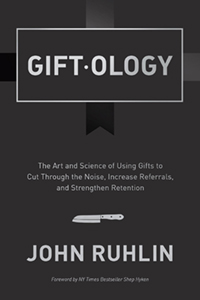
That’s awesome. It’s very altruistic. It just makes good business sense too because you’re so altruistic in giving with your information. The expression information wants to be free so why not put it out there? What’s the expression like, do well by doing good?
Absolutely. That’s the goal. Life’s too short. If my mission really is to help improve customer experience but you have to pay $50,000 to talk to me, that just doesn’t seem like it’s going to work. I try to put as much value and content out there in my speeches, in videos, in free downloads, etc. Then there are these opportunities to step up your involvement a little. Oh, you want to buy the book? Fantastic. Here are all the cool things we’re going to do with the book. Do you want to watch our video course? Great. We have a free video course but then we also have a paid video course. Each level in the process, yes the investment, both financially and of your time, increases, but the value and hopefully the impact and the return increases exponentially as well.
Yeah, for sure. Very cool. This 10-day challenge, are you going to have a private Facebook group to go with that? How do you get a community rallied around this?
We’re actually talking about that right now. Customer experience is one of those interesting things where sometimes people don’t want to admit that they’re working on it. Occasionally, I’ll find a client who insists as part of our contract that, “You can’t let anyone know that we’re working together. Because we don’t want our competitors to know that we think our customer experience is bad. Because if they knew that, they would tell the marketplace.” I’m thinking to myself, “Folks, the marketplace already knows.” You really don’t need to be sweating your competition. If anything, tell them you’re doing this and maybe it forces them to up your game which becomes a self-fulfilling prophecy. Because then you have to up your game in response and all boats rise together once the tide starts lifting. We’re talking about doing some type of community around it that’s not entirely determined as of yet. But we’re certainly going to start it the very least with the courses. I believe this for a while but the writing is really on the wall now. People want to consume content via video. I enjoy being on video. It’s a lot of fun, as hopefully, your audio listeners are picking up on. I like to think I bring a little bit of energy to the table, a little bit of excitement. My goal is to have these videos be the kind of thing that not only do you watch but you want to show your coworkers or your colleagues and say, “Check this out. We should try this.” That kind of thing that really gets people jazzed and excited for it.
Yeah, for sure. Do you have a home for this yet where you’re going to launch it? Is it going to be available on your speaking website?
Yeah. Everything associated with my business and my brand is at joeycoleman.com. Everything from the mini-course to information about the book to information about the full course to blog reports, links to the podcast. There’s a variety of resources there for people to come and check it out.
Awesome, cool. My five-day challenge is also on my personal website on stephanspencer.com, for listeners who wanted to explore what that’s like. I’ve got email sequences all set up. You get to see the daily email for five days. You got a private Facebook group to show you’ve done the challenge by posting photographs like evidence or screenshot. Then you get some really cool bonuses, really cool bonuses. It’s definitely worth doing.
Really cool bonuses, super bonuses.
That’s right. I’m not going to tell you what they are.
No, I know. That’s the point. It’s the human condition. We like surprises. We like moments of delight. We like unexpected bonuses.
That’s right.
I love it.
Yep. That’s at stephanspencer.com/5daychallenge. Awesome. Let’s jump back to speaking for a little bit then we’re going to go to some about your methodology, eight phases and that. You do a lot of speaking.
I do.
How many speeches do you do in a year?
The fascinating thing about this question, I promise I’ll answer it, is what do you define a speech as? Is a speech an hour-long keynote? Is it a 30-minute webinar? What do you define it as? I usually think of speeches as me in front of a room that has at least 25 people where the reason the people are in the room is to listen to me. It’s like getting up and giving a toast to the wedding doesn’t count. Yes, it’s a speech. But it doesn’t count in this criteria. With that criteria, I would say I’m in the 25 to 40 a year, depending on the year and depending on whether we’re counting like smaller mastermind groups or bigger hundreds or thousands of people in the audience type things. The majority of my business is as a professional speaker. Which means I get paid to speak, I travel all over, I’m on the road about 2 ½ weeks out of every month and here, there and everywhere giving speeches.
The majority of my business is as a professional speaker, which means I get paid to speak.
Awesome. Are you a member of the National Speakers Association?
I actually am not a member of the National Speakers Association currently but I am planning to attend their annual meeting next year. Because I have a number of friends who are in the association who have said, “Joey, you should come check this out. It’s a lot of fun and provides a lot of value.” Talk about brand experience, the thing that always made me hesitant to join is lots of times their local chapters do Saturday morning meetings at [7:30]AM. I’m a night owl, brother. I’m just like I will never make a single meeting unless I come to it from the night before. Like I’m going out and I’m finished going out with friends and that kind of thing. It’s like, maybe I should go to my NSA meeting, that kind of thing, first thing in the morning before going home. Now that I have children, my total night owl days are waning a little bit. I’m up more in morning so I’m like alright maybe I should check this out.
Yeah, you should. I’m not a member myself but I also know some very active members who’ve gotten a lot of value out of it. I’ve been to a number of chapter meetings. It’s really, really good.
Nice. I definitely plan to check it up.
In fact, one of my long-time clients, Steve Spangler, had him as a client for over a decade. He’s in the National Speakers Association hall of fame.
Nice, nice.
That’s a big deal.
I was having dinner about a week ago with my buddy Shep Hyken who’s also an incredible speaker and expert in customer service, customer experience space. I don’t think he’s the immediate past president. I think he’s maybe two slots removed president of the National Speakers Association. He was ribbing me and saying, “Joey, we need to get you to a meeting now.” Stay tuned, folks. If any of you are in the National Speakers Association, I will be seeing you at a meeting soon.
Yeah. It’s so different from Toastmasters.
Oh, yes.
Which is just amateurs getting together being very amateurish and paying a penny or a quarter every time they say uh and uhm. To making a real business, I’m going to make money off of my speaking.
Right.
Yeah.
Nope, it makes perfect sense.
Another person who’s active in the National Speakers Association is Jay Baer.
Oh, yeah. I know Jay very well.
Yeah. He’s been on my other show on Marketing Speak, which I’m going to have you on as well. Listeners, check out the Jay Baer episode, and the Steve Spangler episode for that matter, on Marketing Speak. Those are both great episodes about customer service. For Steve Spangler, we covered more about viral video making and stuff because he’s got over I think it’s 200 million views on Youtube now.
Wow.
It’s kind of a big deal on Youtube.
Yeah. There you go. Yeah. Jay Baer is a dear friend. He’s a great guy, consummate professional, great speaker, fantastic books. He actually introduced me to the gentleman that eventually became the agent for my book. He and his company, Convince And Convert, manage all the aspects of the Experience This! podcast, which is a new podcast that a buddy and I launched about a month ago now. Jay’s a fantastic guy.
Cool. I have to plug the show Experiences into our show notes so people can subscribe to that too.
Yeah, that’ll be great. It’s a bite-size pieces of customer experience delight. 30-minute show, rapid-fire that I co-host with my buddy Dan Gingiss who’s the global head of social media for McDonalds. He represents the big, large, looming corporations and I represent the smaller companies and what you can do creatively to create interesting customer experience. The whole premise behind the show is that it’s a positive show of little segments. You can get a bunch of different ideas in a short amount of time. It’s all the positive stories of customer experience and customer service as opposed to what we often see when we turn on the news or read in the trade press which is look at how this company failed with this customer. There’s enough of that in the news. You don’t need that on your podcast as far as I’m concerned.
Yeah. There’s so much focus on negative news, it’s a 10:1 ratio on the newspaper, on TV and everything.
Yeah.
Reticular activating system is finely tuned for negativity.
It’s just like when you seek out the negativity, then you get a lot more of that negativity attracted into your life.
Exactly, my friend. Exactly.
Reticular activating system is finely tuned for negativity.
Exactly.
What a terrible way to live your life. More about the speaking because you are a very active, similar sort of amount of speaking as I do. I’m curious about what are your favorite types of talks? Is it more the keynotes, the why sorts of talks? Is it more the what talks, more down in the ground kind of like here’s the meat and potatoes of the situation? Or is it more the how to talks where you’ve got longer time period and more of a workshop?
I end up doing all, as you might imagine, all of those types of talks. I think right now the ones I’m liking the most are the keynotes. Mainly because I think when it comes to retaining our customers, most people don’t give that a lot of thought or a lot of effort or attention. For example, if you’re going to go on Amazon today and you were to search sales and count up how many books come up on your search, then search marketing, and count up all those books. Add those two numbers together, that’s one column. The other column, you search customer experience, customer service, customer loyalty, customer retention, account management, basically all the phrases you can think of that might fall into post-sale behavior. Then add all of those numbers and hits that’ve come up. Any guess as to what the ratio is to books that have been written on what happens before someone becomes a customer versus books that have been written for what happens after someone becomes a customer? Want to take a guess?
1000:1.
It’s not that big but it’s pretty significant. It’s 43:1.
Okay.
43:1. You think about the typical bookstore has maybe 200 business books, 300 business books. If we recognize that of those business books, if they have that many kind of marketing and sales books, we’re really only going to have about a half dozen customer experience books or customer service books, what happens after the sale. I really think it’s one of those things where there’s not a lot out there in the marketplace for it. I find there’s some pretty big aha moments for the audience where they’re like, “Wow. We spend all this time and money on marketing and sales but once they become a customer, we just forget about them.” That aha moment lots of times is enough to get people moving in the right direction. What I really love is when we can do a keynote in the morning at a conference and then a breakout session in the afternoon where we dive deeper. The people that want the 35,000 ft assessment can get that in the morning and the people who want to roll up their sleeve and really dig into how to apply this stuff can get them in the afternoon.
When I talked about these different types of talks, the keynotes and the breakouts and the workshops being the why talks, the what talks and the how to talks. I didn’t make that up. That actually is methodology from Tamsen Webster.
I know Tamsen very well. Absolutely. Yeah, the Red Thread.
The Red Thread.
Yeah, Tamsen’s Red Thread methodology for developing speeches is fantastic.
Yeah, she’s great. I’ve had her on my other show, on Marketing Speak. Definitely a great episode for our listeners to check out. Episode 72. How about Michael Port?
Oh, I know Michael very well. I met Tamsen through Michael. Michael’s a world-class speaker. I did some private training with him at a program he runs called A-Listers which is for professional speakers to continue to hone their craft. Tamsen was a fellow student in that small mastermind group that we did a course together. Then we both just spoke at his Heroic Public Speaking event a few weeks ago, which by the way if you are interested in being a speaker, if you are a speaker and want to be a better speaker, I believe there is no better training on the planet than Michael and Amy Port’s Heroic Public Speaking event. In the interest of full disclosure, I’m a presenter there. I’m always happy to present there. I also just became a member of their graduate school faculty. They have a grad school where you can get more personalized training. I just joined their faculty this past month, actually. I will start working with their students going forward.
Congratulations. That’s awesome.
Thank you. I’m really excited about it. It’s a fun group. I love the idea of helping other people get out and have as much fun on stage beside you and get the chance to travel the world and give speeches and hopefully change lives in the process. Yeah, it’s tremendous, tremendous people, Michael and Amy Port.
Yeah. That’s high praise. His Heroic Public Speaking program is so amazingly good. I have not experienced it. I have had him on this podcast, episode 24. We talked about being a better speaker but I have not yet experienced his life program. I’ve heard great things about it. Another reason for me to sign up and attend is your high praise of it.
We know what buyer's remorse is. Yet very, very few businesses have a systematic way of addressing it. Share on XMy pleasure. Since we started this conversation talking about Tony Robbins, I will tell you Michael and Amy Port’s approach to working with speakers is similar to Tony’s approach to doing interventions in his events. They’ll have someone get up and start speaking. Then they’ll work with that speaker. When you first see it you’re like, “Oh, look at all that great advice they’re giving that speaker and helping that speaker with.” Then all of a sudden you realize, “Wait. This is all advice that applies to me too.” You learn by seeing it in action. It’s absolutely incredible. Their ability to take somebody who’s making $25,000, $30,000, $50,000 a speech, have them talk for two minutes and then dissect those two minutes and make them exponentially better is an incredible thing to witness firsthand.
That’s awesome.
Super cool.
I got to sign up.
Nice, nice.
I promised we would get back to your customer service methodology, the eight phases to get these customers, customers for life. How do we do that?
Absolutely. Here’s how the eight phases work. The first phase I think of as day 0 in the 100-day process. This is the assess phase. In the assess phase, it’s like the traditional marketing in sales silo in the business. The customer’s trying to figure out do they want to buy your products, do they want to sign up for your service? They may be comparing you to competitors although the number one competitor they’re comparing you to is stasis and apathy. Basically what would it be like if I continue to do nothing to solve this problem I have in my life? Once they’ve assessed whether you’re worth it or not, ideally they reach a point where they raise their hand and they admit that they have a problem and that you have the answer. Phase one is assess, phase two is admit. When they admit they have a problem, they’ve bought into the belief that you’re going to help them out. This is day one in the 100-day process. After they admit, they move to the next phase, phase three which is affirm. This is traditionally the buyer’s remorse stage. What happens in the typical company is they skip right over this stage where the customer, even though they just made a purchase from you, they’re beginning to doubt whether you’ll actually live up to all your marketing hype. In the affirm stage what you want to do is reinforce the decision that they made and assuage any concerns that they have about whether you’re actually going to deliver on the promise.
Yeah because the buyer’s remorse starts to kick in.
Exactly. Because the buyer’s remorse happens immediately. It happens regardless of the size or scale of the project or the product that they’re buying. Obviously, it gets bigger. Buyer’s remorse for a car is much greater than buyer’s remorse for a pack of gum. But the research shows that you still have it for a pack of gum. It’s just it goes away pretty quickly. You want to make sure that you jump in and you address that buyer’s remorse. This is where, to be the blunt, Stephan, I usually have people in the audience going oh my gosh, I went to business school or I’ve been running my business for two years, five years, three decades, whatever it may be. I know exactly what buyer’s remorse is. I’ve heard of it. We do nothing to address it in our business. We all know what the phrase means. We know what it is. Yet very, very few businesses have a systematic way of addressing it.
Let me ask you a quick question then about that.
Sure.
What can a consultant or coach such as myself do to affirm and assuage that buyer’s remorse concern or second-guessing themselves?
Let’s role play this a little bit. What usually happens when you sign on to work with the consultant is there’s some type of a contract that gets signed. Then usually what is the next, I’m not saying this is how it happens in your business, what is the next communication they get from that business? It’s the invoice.
Yeah.
The first communication we have is the invoice.
Who ever got excited about paying for anything? The first communication we have is the invoice. Then with a lot o f consultants, what happens is, “Here’s your homework assignment. Before we can officially start this project and kick things off, I’m going to need you to answer these 58 questions or fill out these three forms or send me the links to these three things on your website, the access to your Google analytics, blah, blah, blah.” It’s like homework gets assigned on day one. That’s not going to leave you in the position of a teacher that they love. I don’t know if you ever had that teacher in school who assigned a boatload of homework on the first day and everybody was like, “Geez. It’s the first day. This sucks.” Instead, we like the teacher who entertains us on the first day, who gives us an idea of what the relationship is going to be like, lets us know that they’re as excited about us being in the room as we are. In this affirm stage, this is a great place to send the handwritten thank you note. This is a great place to shoot a quick little video and say, “I am so excited that we’re going to work together. I’ve been thinking about your project since we first met two months ago. I’ve already done a bunch of work. I’ve already been whiteboarding out some things that we can do. I’m so excited to review them at our kick-off meeting when we get started.” Those types of things let customers know that they’re loved. They let them know that we want them. Because lots of times when they buy or they sign on to work with us, they’re thinking, “Well, I’ve already raised my hand and said I want you and I’m interested. Now that I’ve said that, are you not going to be as interested as me?” Because the chase in the sales and marketing stage is always much sweeter than the catch. Now they’re starting to worry like where will I measure up? You absolutely should be having some communications that are not invoice based, non-contract based that are designed to really just emotionally connect with that customer early on in the relationship. That happens in phase three, affirm. Then we move to phase four.
I have to tell you, that was amazing.
Thanks. That’s a crazy thing. Here, we’re three phases in. Hopefully, you’re already getting value.
Oh my God. I’m going to transform my process on onboarding clients now.
I love it.
Thank you.
Good. You’re welcome. Now we come to phase four, activate. This is usually the kick-off meeting or when the project first starts. The reason I call it activate is I want it to feel like a bolt of lightning, that you jolt the relationship alive and bring a ton of energy and excitement to it. Lots of times, the kick-off call or the kick-off meeting feels like an afterthought. It’s, “Oh, we’re all going to meet each other. We’re going to review the things that were in the contract that you already signed. Then we’re going to talk about the schedule and the deadlines. If I’ve been consulting for long enough, I’m probably going to outline what happens if you don’t live up to the schedule, that you have to pay more or that I don’t promise to keep the deadlines.” We do all this kind of hedging of our bets and making sure we’re okay. It’s like, this is the first date. The first date needs to be awesome. For the first date, you don’t say, “Hey, let’s go to that restaurant you’ve been to 10 times already. Then go to a movie you didn’t want to see.” That’s not going to be a good first date. Instead, surprise them. Pick them up. Wind them and dine them a little. Take them to the experience they’ve never had. That experience doesn’t need to be like an outside after-hours experience. I had a situation one time where I was doing some consulting for the World Bank actually, global organization. I showed up for the kick-off meeting. I brought into this meeting cream soda, root beer, chocolate-covered pretzels, yogurt-covered strawberries –
Were you trying to kill these people?
This is my pre-Tony Robbins days, okay? Pre-Tony Robbins days. It’s not super healthy. But I brought in sugar. Here’s why: it was a room full of economists working at the World Bank who were basically trapped in a building in their cubicles all day, everyday looking at spreadsheets. I wanted them to know that their interactions with Joey were going to be unlike any other professional interaction they’d ever had. Stephan, I can’t tell you, it was as if I have brought in bars of gold. They rushed to the table. I was like, do they feed you people ever? They were diving into the food. Everybody’s popping the root beers and cream sodas and cheers-ing each other. This is how the kick-off meeting started. Do you think that was a successful project? Or at the very least, do you think that we got things off on a really good footing right out of the blocks? Absolutely, because we activated the relationship. Next comes phase five where most companies fall apart. This is the acclimate stage. I live in Colorado. My house is at 8500 feet. When people come to visit, they have to acclimate to the altitude. Even though I live here all day everyday, the typical person doesn’t. The analogy to your business is you’ve done hundreds or thousands of consulting engagements. You know how it works, you know where the highs and lows are going to be. But this client falls into one to two categories. They’ve never done anything like this before. Or if they have, it was a horrible experience, which is why now they’re working with you, not with the people they worked with before. You got to hold their hand. You’ve got to acclimate them to not only your way of doing business but to how this process is going to work. Lots of times people will say to me, “But Joey, in the proposal I outlined what all the phases where.”
Most companies, if the goal is accomplished, they never take the time to acknowledge it.
Folks, you sign contracts without reading them all the time and so do your clients. Stop believing that if it’s in the proposal, it’s committed to their memory. You need to reiterate. Great, we just did step one and now we’ll move to step two. By the way, after that will be step three. You need to overly hold their hand and help them acclimate to doing business with you. That acclimation period, depending on the consulting engagement or whether it’s a product or a service offering, can be a couple of days. It can be months and months. It really just depends on your business. But at some point, we hope they reach the next phase. Phase six, accomplish. This is where the customer accomplishes the goal they had when they decided to start working with you. Let’s say they want to SEO their website and they really want to be on page one of Google in the top two or three search results. If you don’t find out what their goal is on day one when they first start working with you, you’ll never know whether you’ve accomplished the goal or not. When you do accomplish the goal that they had in the beginning, that is a moment worthy of celebration. It is a milestone worth marking. It is something that you need to work towards. When you hit it, you need to remind the client that that thing that was their goal way back in the beginning just happened. This is worthy of a celebration. Most companies, if the goal is accomplished, they never take the time to acknowledge it. Often, they don’t even make sure that the goal gets accomplished. We worked with you on your SEO for two months. We did good things. They’re like, “Yeah. But we never got to be listing number two on Google.” You’re like, woah. I didn’t know that was important to you. Whose fault is that? Is that the client’s fault for not telling you or the consultant’s fault for not asking? We’ll argue it’s a little bit of both. Since we can’t control how other people act or behave, we at least can control how we act or behave. Let’s make sure we ask that question. If you accomplish the goal, you then get to move on to phase seven, adopt. This is where the customer adopts you and decides they will never do business with anyone but you. They’ve become a lifelong customer, they’re super excited you’ve delivered everything that you promised, they’re thrilled about the relationship, they have become a loyal supporter and loyal fan. Then and only then can we move into phase 8, advocate. This is where they tell everyone they know how much they love you. This is the raving fan status. This is the zealous supporters’ status. This is the place where they want to tell all of their colleagues, all of their competitors, all of their business connections and their masterminds that, “Oh my gosh, you need to work with Stephan because he will revolutionize your business.”
The problem is most people ask for referrals way, way, way too early in the relationship. It’s like going on the first date, having a wonderful time, taking your date back home that night standing on the doorstep and saying, “I had an amazing time. We should do this again.” Much to your surprise and delight they say, “Yes, I’d love to do that.” You say, “Great. What about next Friday night?” They say, “Yeah. Let’s make that happen.” Then you’re like, “Awesome.” They’ve adopted you, they’re in. Then you say, “By the way, you mentioned over dinner that you have two roommates. Your two roommates are probably similar in age and ilk than you are. I was wondering if I could have their contact info. Because if you’ve enjoyed dating me, I’m sure they will enjoy dating me too.” You will get slapped with this type of approach in your personal life. Yet most businesses approach referrals in this type of a misguided, clunky format. They’re asking for them way too early before the trust has been established, before the relationship has been built upon, before the goals have been accomplished. They’re already asking for the keys to the inner kingdom. No, no, no. It’s absolutely important to ask for referrals but you have to know when to ask for them. The same goes with upsells. Don’t try to upsell someone before you’ve actually delivered on the value you promised with the first sale. These are the eight-phase: assess, admit, affirm, activate, acclimate, accomplish, adopt, advocate. The eight As that the goal is to navigate your customer through these eight phases. I believe every customer has the potential to go through all of these. Most customers in the typical business today fall off somewhere after phase four, somewhere usually between phases four and five to the point where across all industries globally 20% to 70% of your customers are leaving within the first 100 days of starting to do business with you. The reason they’re leaving is because you don’t have a systematic, consistent onboarding process that is designed to meet them emotionally where they’re at and to hold their hand throughout the entire customer journey.
Wow. That is so freaking cool.
Thanks, buddy.
Yeah. You’re good at this.
I appreciate it. I believe strongly in it. We’ve just been talking about this for a few minutes but hopefully, it’s pretty clear to people like, “Oh, wow. I never thought of it this way” and “Oh, wow. There are a couple of places where I’m not doing anything.” There are probably some places where you’re like, “Yeah. We’re doing pretty good in that phase.” That’s great. I’m glad that you’re doing well in that phase. That’s awesome. What can we do to make sure you’re doing well in all of the phases? I’m not a big fan of these analogies of funnels but I know in the online world a lot of people think that way. The whole theory on the funnel the more people you put into the top of the funnel, the more people sift all the way down to the bottom. Think of this process as really widening the funnel. Not at the top, at the bottom. It takes fewer people coming in the top to take the great people you need coming out the bottom. Because you’re holding their hand as they’re sliding down the bottom.

Yeah. There’s so much churn in pretty much every business.
Yeah.
That can address so much of that with your eight-phase process. Love it. This is great stuff.
Cool.
We’re over time. I’ll let you go. Listeners, take some action because this is really good stuff. You can really up-level your business or your career by implying this eight-phase methodology of Joey’s and get that first 100 days with your customers and clients to be spectacular.
Absolutely. Send me an email. Let me know how it worked. The email’s really straightforward, it’s jo**@*********an.com. We’re not trying to hide anything here. Send me an email. Let me know what you implemented and you’ll be well on your way to never losing a customer again.
Awesome. Your book, Never Lose A Customer Again is coming out in March. If our listeners listening to this episode around that time or afterward, be sure to pick up that book. You can even pre-order it. When will it be available on pre-order?
It’s actually available now. You can go to Amazon or any of your favorite online pre-order services. Go ahead and place a pre-order. That would be great. We’re also here in the coming weeks launching some great pre-order bonuses on the website. If you just go to joeycoleman.com, you’ll be able to find all of the information about the launch of Never Lose A Customer Again. We’d love to have you participate because we’ve got this mission. We need to raise the bar on customer experience around the planet. The way we’re going to do that is one business at a time.
Fantastic. Alright, thank you, Joey. Thank you, listeners. This is your host Stephan Spencer signing off. We’ll catch you on the next episode of Get Yourself Optimized.
Important Links
Connect with Joey Coleman
Organizations
People
Seminars/Workshops
Podcast
Books
Previous Get Yourself Optimized Episode
Previous Marketing Speak Episodes

